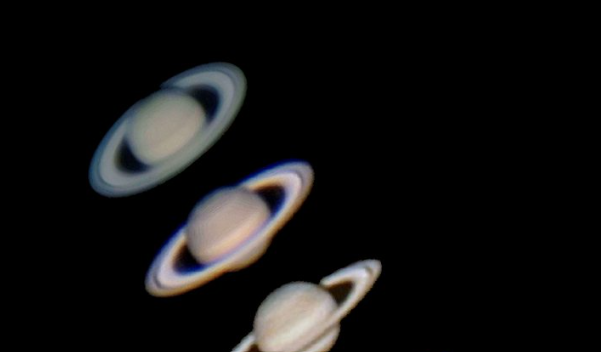From discovering the “God particle” to uncovering gravitational waves and identifying the first real clue for dark energy, the past 25 years have seen extraordinary advancements in astronomy. Here’s a look back at some of the most groundbreaking findings.
In 1999, astronomers found the first planetary system outside our own, discovering a trio of Jupiter-sized planets orbiting the star Upsilon Andromedae A, located roughly 44 light-years from Earth. This discovery was a pivotal moment, proving that our solar system was not unique and that other planetary systems could be found with advancing technology.
In 2001, astronomers detected the first free-floating planet in the Milky Way, challenging the traditional definition of a planet. This rogue planet, hovering in the nearby Trapezium Cluster, indicated that there might be as many as a quadrillion free-floating worlds in our galaxy alone.
M51 has several supernovae discoveries. In 2011 a Type II supernova (SN 2011dh) was observed in the galaxy.#galaxy #Supernova #space #astronomy pic.twitter.com/jCGCu17PJP
— Musk Melon (@dailyXmatter) July 19, 2024
The same year, NASA’s Spitzer Space Telescope found the first exo-asteroid belt around the sun-like star HD 69830, located roughly 40 light-years away. This belt, 25 times more massive than the main asteroid belt between Mars and Jupiter, provided insights into planetary formation and the potential emergence of life.
In June 2001, physicists solved the mystery of the sun’s missing neutrinos, finding that these subatomic particles had transformed into other types on their journey to Earth. This discovery confirmed that neutrinos have mass and helped resolve a long-standing discrepancy in solar physics.
Later in 2001, astronomers using the Hubble Space Telescope discovered the first exoplanet atmosphere around HD 209458b, a planet located 150 light-years away. This finding opened a new era in exoplanet exploration, allowing scientists to study the atmospheric compositions of alien worlds.
In 2007, the discovery of fast radio bursts (FRBs) revealed new information about the universe’s missing mass. These intensely bright pulses of radio waves, originating from galaxies billions of light-years away, helped astronomers locate intergalactic matter.
The discovery of the Higgs boson in 2012, often referred to as the “God particle,” was a monumental event in particle physics. Detected by the Large Hadron Collider in Switzerland, this particle is crucial for explaining why other particles have mass.
I just published The Amazing Discoveries of the James Webb Space Telescope: A New Era for Astronomy? https://t.co/ESidLQjtyR
— Graviton-space facts (@graviton_sf) July 17, 2024
In 2016, scientists confirmed the existence of gravitational waves, faint ripples in space-time predicted by Einstein. These waves, detected by the Laser Interferometer Gravitational-Wave Observatory, opened a new way to study the universe.
Astronomers spotted the first interstellar visitor in our solar system in 2017. Dubbed ‘Oumuamua, this mysterious object sparked debates about its origin and nature, with some suggesting it could be an alien artifact.
In 2019, astronomers captured the first image of a supermassive black hole at the center of the galaxy M87, using the Event Horizon Telescope. This groundbreaking image provided a new way to study black holes.
🔭 The JWST: 25 years in the making, now the world’s largest observatory. A game-changer in astronomy, 100 to 1000 times more powerful than any previous telescope! 🌌 #Astronomy #JWST pic.twitter.com/YIa6f6QHrn
— Joshua Dennis (@Joshdennistenor) July 6, 2024
A detailed map of the Milky Way, released in 2020, plotted nearly 1.8 billion stars, offering unprecedented insights into our galaxy and its neighboring systems.
In 2024, astronomers announced the discovery of starless, “empty” galaxies and suggested that dark energy might be evolving over time. These findings challenge existing theories about galaxy formation and the nature of the universe’s expansion.
The James Webb Space Telescope (JWST) has also revealed new information about the early universe, showing that dwarf galaxies were crucial in flooding the cosmos with its first light.
Key Points:
- In 1999, the first planetary system outside our own was discovered.
- The first free-floating planet was detected in 2001, challenging traditional definitions.
- The Higgs boson, or “God particle,” was discovered in 2012, explaining particle mass.
- Gravitational waves were confirmed in 2016, opening a new way to study the universe.
- The James Webb Space Telescope revealed key information about the early universe in 2024.
James Kravitz – Reprinted with permission of Whatfinger News



